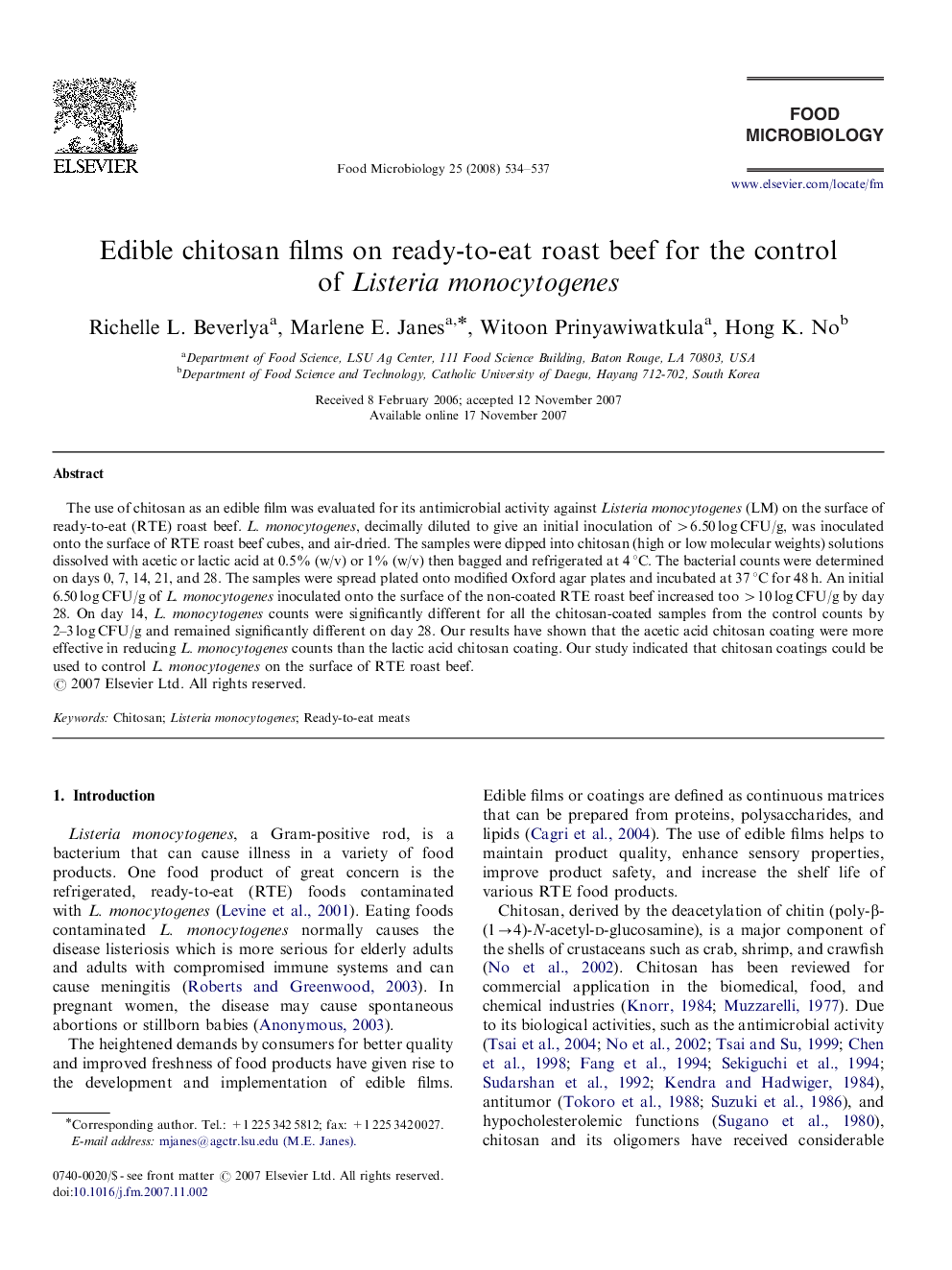| Article ID | Journal | Published Year | Pages | File Type |
|---|---|---|---|---|
| 4363729 | Food Microbiology | 2008 | 4 Pages |
The use of chitosan as an edible film was evaluated for its antimicrobial activity against Listeria monocytogenes (LM) on the surface of ready-to-eat (RTE) roast beef. L. monocytogenes, decimally diluted to give an initial inoculation of >6.50 log CFU/g, was inoculated onto the surface of RTE roast beef cubes, and air-dried. The samples were dipped into chitosan (high or low molecular weights) solutions dissolved with acetic or lactic acid at 0.5% (w/v) or 1% (w/v) then bagged and refrigerated at 4 °C. The bacterial counts were determined on days 0, 7, 14, 21, and 28. The samples were spread plated onto modified Oxford agar plates and incubated at 37 °C for 48 h. An initial 6.50 log CFU/g of L. monocytogenes inoculated onto the surface of the non-coated RTE roast beef increased too >10 log CFU/g by day 28. On day 14, L. monocytogenes counts were significantly different for all the chitosan-coated samples from the control counts by 2–3 log CFU/g and remained significantly different on day 28. Our results have shown that the acetic acid chitosan coating were more effective in reducing L. monocytogenes counts than the lactic acid chitosan coating. Our study indicated that chitosan coatings could be used to control L. monocytogenes on the surface of RTE roast beef.
